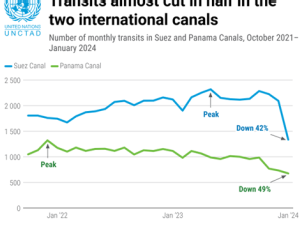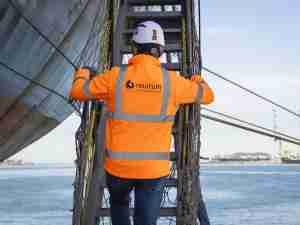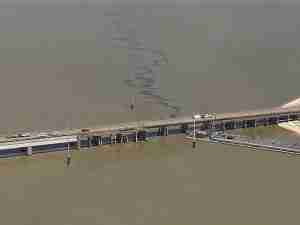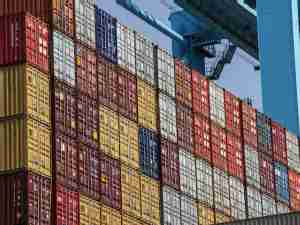The Port of New Orleans (Port NOLA) announced today that it moved a total of 133,845 Twenty-Foot Equivalent Units (TEUs) during the third quarter of fiscal year 2024 representing a 19% increase year over year and also a record quarter with container volume not seen since the supply chain issues in 2021. As containerized import volumes continue to steadily climb, due in part to Port NOLA’s investment in four new ship to shore container cranes, throughput efficiency (the number of containers that pass-through Port NOLA in a given timeframe) also continues to be high.
“This record growth is a direct result of our innovative logistic solutions during supply chain disruptions as shippers focus on diversifying their trade lanes,” said Port NOLA President & CEO and New Orleans Public Belt (NOPB) CEO Brandy D. Christian. “Our strategic alignment with the NOPB makes New Orleans the only U.S. city where deep-draft shipping coincides directly with a rail gateway that serves six major Class 1 railroads.”
During the third quarter of fiscal year 2024, loaded imports increased by 19%; loaded exports are up by 16% year over year. Port NOLA’s top import commodities include coffee, mainly from South America and Southeast Asia, various chemicals from Mexico and North Europe, as well as wood products such as plywood from Asia and South America. Top export commodities include plastics such as PVC, mainly to Asia, various chemical products to North Europe, and paper to Central America. Additionally, there were 100 vessel calls this quarter, representing a 5% increase compared to the same period last year.

“This upward trend is very encouraging and consistent with higher reliability in our weekly ocean carrier services,” said Port NOLA Chief Commercial Officer, Amanda Coates. “It also translates into more steady volumes from month to month than those from previous quarters.”
Last month, Port NOLA announced it set a new record for its container-on-barge service, moving 20,500 containers by barge during calendar year 2023, the highest since the service started in 2016 with the Port of Greater Baton Rouge and Ingram Marine Group. The partnership represents the largest container-on-barge network in the U.S. with connectivity to the nation’s heartland. Container-on-barge moves containers by water rather than by truck on roads to reduce air emissions, moving an average of 30,000 TEUs per year between New Orleans, the Port of Greater Baton Rouge, Memphis, and St. Louis.
Container-on-barge volumes nationwide are expected to grow above 200,000 TEUs by 2050. This necessary, efficient transportation access allows U.S. shippers to compete in global markets and offers expanding trade opportunities to urban and rural communities.
Like the Uptown Napoleon Container Terminal, Port NOLA’s new downriver container terminal, the Louisiana International Terminal (LIT), will also be equipped to provide container-on-barge services. LIT builds on past federal investments by the U.S. Army Corps of Engineers in dredging the Mississippi River to 50 feet and the $14.6 billion Hurricane and Storm Damage Risk Reduction System, in which LIT will be strategically located.
LIT will be built in Violet, Louisiana, 17 miles downriver from the Crescent City Connection bridge, eliminating air draft restrictions that limit the size of vessels that currently call on the Port of New Orleans. The new terminal will serve vessels of all sizes, dramatically increasing Louisiana’s import and export capacity, foster strategic inland growth, and will allow the container-on-barge service to expand with a dedicated berth space designed for use.
LIT, currently in the design and permitting phase, will also incorporate the latest green technologies. That includes shore power, allowing vessels to plug in at the dock, eliminating the need to run diesel engines. This can cut local vessel emissions by up to 98%. Operators also plan to invest in an electrified equipment fleet, further reducing local emissions impacts.












